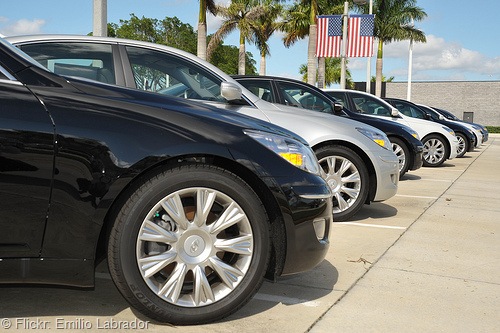Kelley Blue Book has established itself as a valuable resource for motorcycle enthusiasts and potential buyers looking to assess the value of a motorcycle.
Whether you are in the market to buy, sell, or simply want to understand the worth of your motorcycle, Kelley Blue Book provides a straightforward tool for pricing motorcycles.
It offers a comprehensive look at the market, taking into account various factors such as make, model, year, and condition of the vehicle.
Understanding the value of a motorcycle is crucial, especially when negotiating a sale or purchase. KBB evaluates numerous transactions, auction data, and dealer reports to give you an accurate picture of what the market deems the motorcycle is worth.
Additionally, recognizing how specific enhancements and modifications can impact the overall value of a motorcycle can help you make informed decisions when considering upgrades or evaluating a modified bike.
Key Takeaways
- Kelley Blue Book is an essential tool for determining motorcycle values.
- The value is influenced by the motorcycle's make, model, year, and condition.
- Modifications can significantly affect a motorcycle's resale value.
Understanding Kelley Blue Book Motorcycle Values
When considering the purchase or sale of a used motorcycle, Kelley Blue Book offers indispensable valuation information that reflects the market.
Determining Factors for Motorcycle Valuation
Make, model, and year: These are foundational elements that help in identifying a motorcycle's blue book value. The make and model set a baseline for valuation, while the year of manufacture can significantly impact its worth due to depreciation or collectability.
Condition: The overall condition of the motorcycle, from pristine to damaged, plays a critical role in its valuation. Factors such as mechanical soundness, appearance, and any history of accidents or repairs are taken into consideration.
Mileage: Lower mileage typically indicates a lesser degree of wear and tear, which can translate to a higher value.
Additional Equipment: Customizations or added features, such as upgraded exhaust systems or custom bodywork, are also factored into the motorcycle's value but be aware not all additions may increase its worth.
How to Use the Kelley Blue Book for Motorcycles
To determine a used motorcycle's market value or typical listing price, start by visiting the Kelley Blue Book website:
- Select Your Motorcycle: Input the make, model, and year of the motorcycle you're interested in.
- Enter Specifics: Provide details regarding the condition of the motorcycle, mileage, and any additional equipment.
- Receive Valuation: With the provided information, Kelley Blue Book will calculate the motorcycle's value, giving you a reliable figure for buying, selling, or negotiating with insurance companies.
By following these steps, you ensure a more accurate assessment, reflecting what you might expect to pay or receive on the current market.
Price Reference and Market Analysis
When considering the purchase or sale of a motorcycle, reliable pricing references like Kelley Blue Book and NADA Guides are invaluable resources. They offer a comprehensive analysis of the market allowing you to understand the true value of motorcycles.
Comparing Kelley Blue Book and NADA Guides
Kelley Blue Book (KBB) and the National Automobile Dealers Association (NADA) Guides are your primary sources for motorcycle values. KBB often focuses on the suggested retail price and private party value, utilizing dealer surveys and sales transactions to provide an estimate.
NADA Guides, powered by J.D. Power, similarly evaluate motorcycles, but they might place more emphasis on wholesale prices and auction data. When comparing both, it's crucial you cross-reference to ensure you're getting a comprehensive valuation.
Understanding Market Trends and Value Fluctuations
Motorcycle values fluctuate due to market trends, dealer sales reports, and pricing of recent sales transactions. Pay attention to these trends, as the average retail price can rise or fall based on supply, demand, new model introductions, and seasonal changes. Using tools like KBB or Autotrader can help you track these tendencies and predict future value changes.
Impact of Location and Zip Code on Motorcycle Values
Your zip code can significantly affect motorcycle values since certain bikes are more popular or relevant in specific regions. For instance, off-road motorcycles may fetch a higher price in rural areas when compared to urban settings.
KBB and NADA Guides take location into account, offering a more tailored estimate that reflects local dealer sales reports and pricing nuances.
Keep these points in mind when utilizing price reference tools to analyze the motorcycle market.
Enhancements and Modifications Impact on Value
When considering the resale value of motorcycles, the impact of enhancements and modifications can be significant. Depending on the change, these additions can either increase the motorcycle's appeal or detract from it.
Positive Enhancements:
- Performance upgrades: Modifications that improve speed, handling, or reliability can be attractive to buyers and potentially increase the motorcycle's market value.
- Engine guard installation: Adding an engine guard can be perceived as a protective measure, preserving the bike's condition over time.
However, not all upgrades have a beneficial impact on a motorcycle's resale value.
Potentially Negative Modifications:
- Excessive customization: Unique paint jobs or aesthetic modifications that deviate too far from the original look might limit your motorcycle's marketability.
- Aftermarket equipment: Sometimes adding additional equipment can overwhelm potential buyers, especially if it's not from a recognized brand or does not enhance the motorcycle's performance.
Considerations for Overhead Components:
- Any overhead additions should be assessed for their functionality and how they affect the bike's aerodynamics and weight distribution.
It's crucial to remember that modifications are more likely to be valued by someone who appreciates the specific changes made. Your personalization may not align with general market tastes, and thus could lower the resale according to Kelley Blue Book standards. Always consider how modifications will be perceived by potential buyers when assessing the impact on your motorcycle's value.
Buying and Selling Motorcycles

When entering the market for a motorcycle, whether you're buying a used one or selling your own, understanding the valuation is crucial. Kelley Blue Book offers a reliable way to gauge the trade-in value and typical listing price that can guide you through negotiations for a private sale or at a dealership.
Tips for Buying a Used Motorcycle
Research Thoroughly:
- Check Kelley Blue Book to understand the fair market value.
- Compare prices from different listings for an accurate range.
Conduct a Detailed Inspection:
- Request service records and inspect for any upgrades or modifications.
- Look for signs of wear and evaluate the overall condition.
Strategies for Selling Your Motorcycle
Determine an Appropriate Asking Price:
- Use Kelley Blue Book to set a competitive, yet fair, asking price.
- Adjust for any upgrades and the current condition of your motorcycle.
Advertising Your Sale:
- Highlight key features and maintenance history in your advertisement.
- Provide clear, high-quality photos from various angles.
The Role of Mileage and Condition in Sales
Mileage:
- High mileage can lower the value, but maintenance history can mitigate this effect.
- Low mileage typically justifies a higher asking price.
Condition:
- A well-maintained motorcycle commands a better price.
- Note any damages or issues, as these will require negotiation.
When you're ready to buy or sell, proceed with confidence, armed with the knowledge of fair market valuations, ensuring you enter negotiations prepared.




